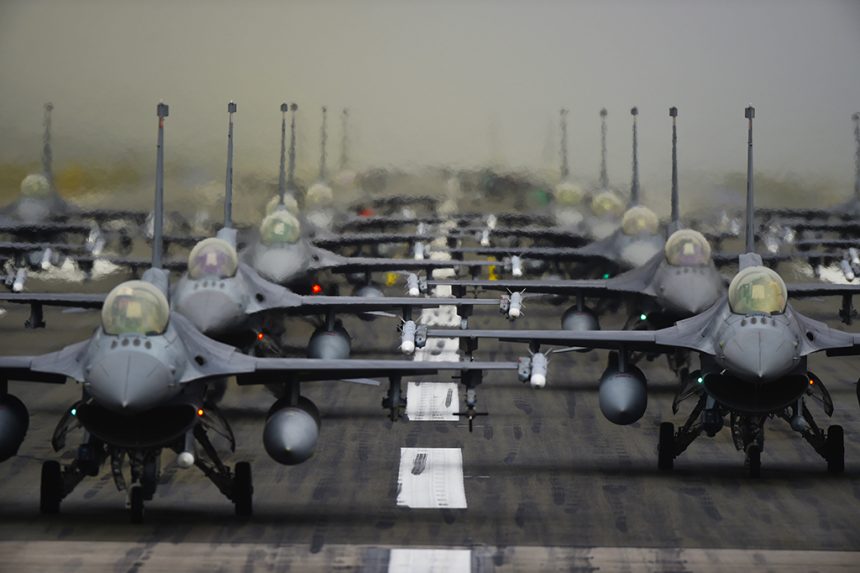Show of Forces training event today.
On Oct. 1, 2019, the 52nd Fighter Wing took part with 26 F-16s in an quite unusual (for the base) Elephant Walk at Spangdahlem Air Base, Germany.
Elephant Walks are training events during which military aircraft (usually fully armed ) taxi in close formation or in sequence (in the same way elephants do) right before a minimum interval takeoff and, depending on the purpose of the training event they then either take off or taxi back to the apron.
The purpose of these trainings is to generate all the available aircraft sorties and to showcase a unit’s ability to launch and recover as many aircraft as possible: hence they are emerging as “an effective deterrent to emerging competitors by demonstrating a show of force.”
“Elephant Walks” have always been particularly frequent in South Korea where local-based U.S. Air Force jets (often alongside Republic of Korea Air Force planes) often stage such “collective shows of force” in response to North Korea’s aggressive posture and threats: tens of U.S. F-16s, A-10s and South Korea’s ROKAF KF-16s regularly taxi down the runway at Kunsan or Osan airbases, in collective “shows of force” whose primary aim is to test squadrons’ readiness to war time operations. However, similar exercises are also conducted at airbases in Continental U.S. as happened, for instance, in April 2012, when nearly 70 F-15E Strike Eagles took part to one of the largest Elephant Walk to date at Seymour Johnson Air Force Base, N.C.
They have been a bit more rare among U.S. Air Force in Europe units thus far.

According to a public release by the 52nd FW, the aircraft taxied in waves of two to four in order to ease congestion at the end of runway after launching out of the protective aircraft shelters located on the flight line.
“This event took a lot of coordination and it’s fulfilling to see multiple sections work together as a cohesive machine to make the mission successful,” said Master Sgt. Michael Klucar, 52nd Aircraft Maintenance Squadron production superintendent, in the news release. “Figuring out the parking plans, recovery plans, and aircraft coordination all play a part.”
All available jets were able to taxi onto the runway and prepare for takeoff. Then, they “simply” taxied back to their shelters; a procedure that requires perfect knowledge of the SOPs (Standard Operating Procedures) of the airport, use of standard radio phraseology, and continuous training: indeed, although one may believe it’s easy to manage two dozen aircraft moving across the so-called maneuvering area and aprons, this is a task that requires a lot of coordination between aircrews, ATC (Air Traffic Control) controllers and ground crews. A single mistake could cause delays, collisions between armed aircraft or may even block the entire airport negating the Wing the ability to launch or recover missions. Not a pleasant condition for front-line unit in wartime.









